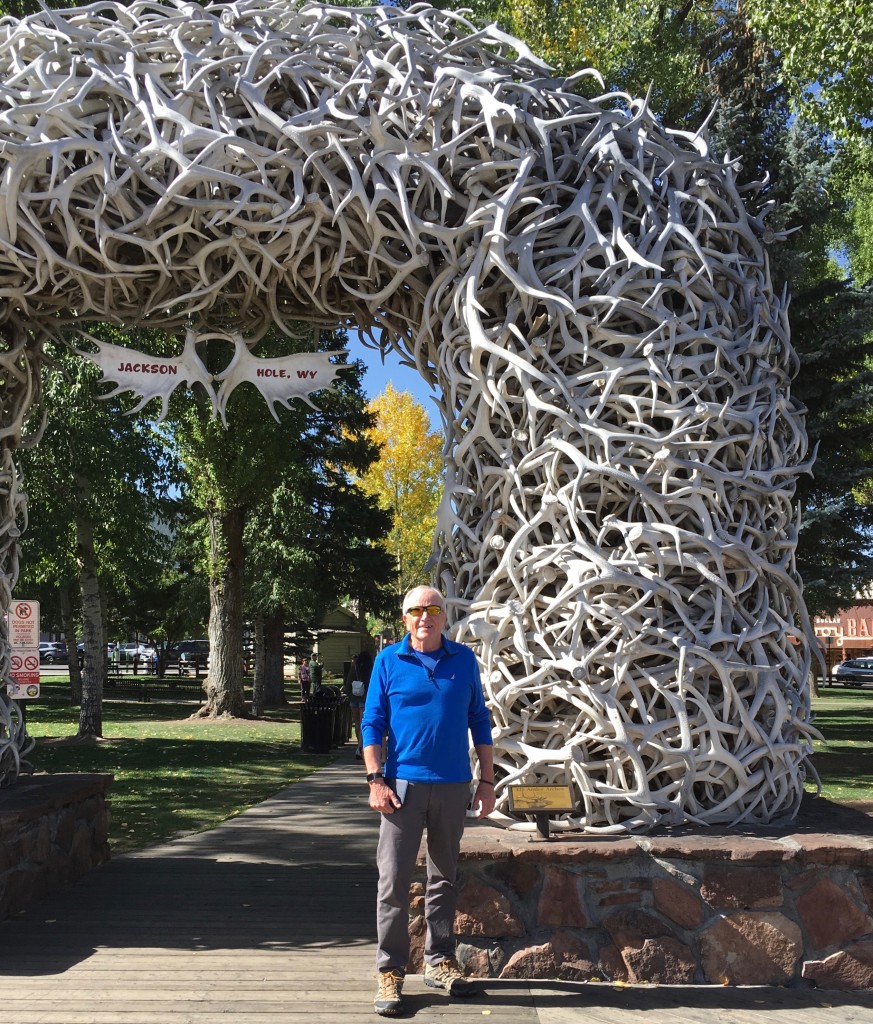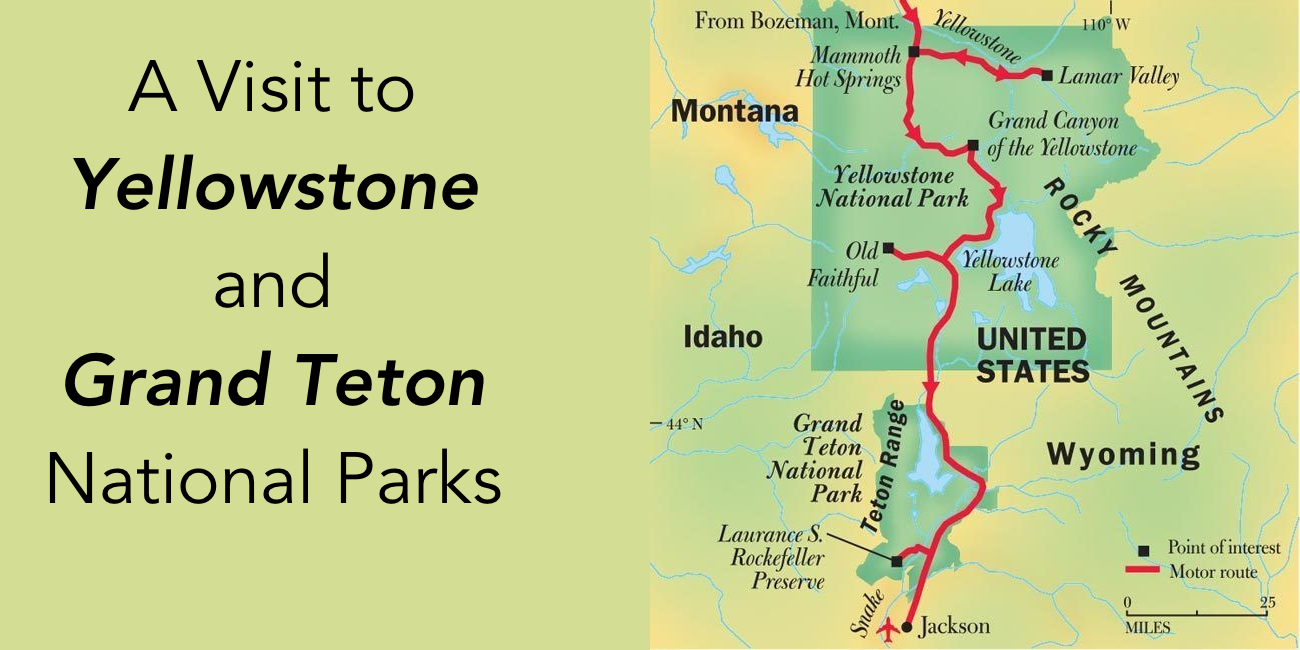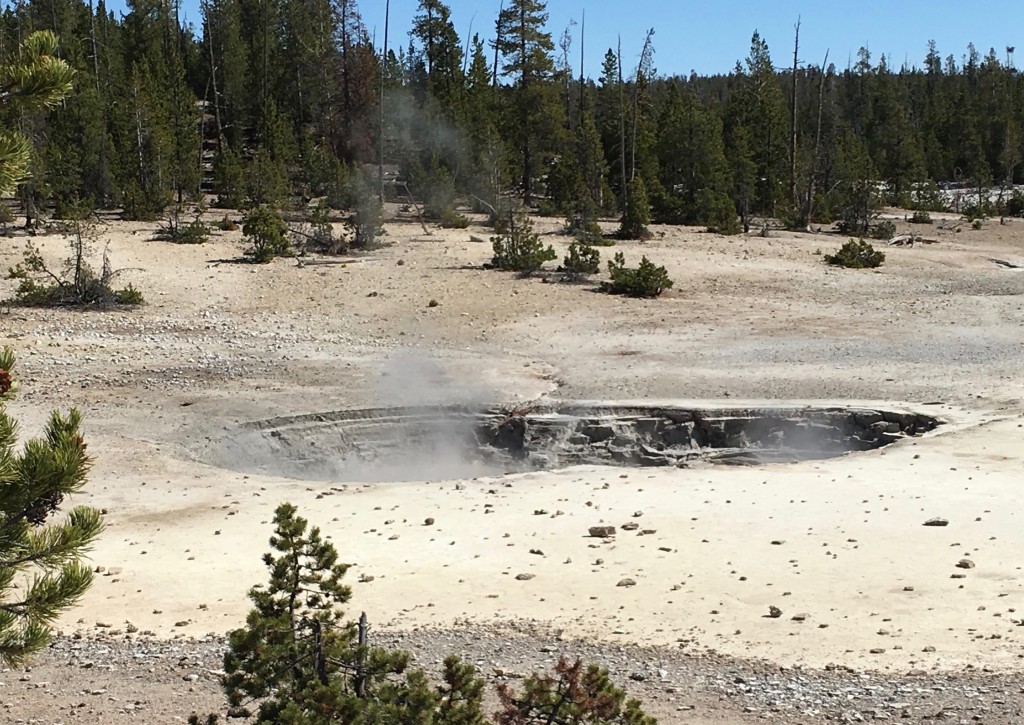Founded in 1967, Teton Science Schools is a non-profit educational organization whose goal is to educate folks from around the globe about nature and, in particular, the Greater Yellowstone Ecosystem. This ecosystem includes both Grand Teton and Yellowstone National Parks. In September 2018, I traveled to the TSS main campus in Jackson Hole, WY to spend a week exploring and hiking both of these Parks with the schools’ educators and expert guides.
In her guidebook, Becky Lomax calls this area “the land of fire and ice. The earth’s tremendous forces have made Yellowstone and Grand Teton National Parks a volatile landscape. The parks bear the marks of ancient seas, volcanic heat, tectonic upthrusting and ice scouring. Even today, they shake and roar.” Boy, was she right on the money!
Yellowstone National Park
Yellowstone National Park was established in 1872 as our first national park. As seen on the map at the top of this page, it’s located primarily in Wyoming extending into parts of Montana and Idaho. Spanning almost 3,500 miles it’s one of the largest national parks in the US.
Yellowstone sits on top of a dormant volcano resulting in more geysers and hot springs than any other place on earth. We learned during our travels this “dormant volcano” blows its top roughly every 600,000 years, and it’s about 600,000 years since it last erupted! When it erupts, it will be a global catastrophe. I recently read a news article where NASA has a plan to cool it by “drilling 10 kilometers deep into the super-volcano and pump water down under high pressure. This would slowly lower the temperature day by day.”
In addition to the eerie, moon-like surface with the sputtering and gushing of geological phenomena, the park consists of forests and meadows, lakes, streams, waterfalls and the Yellowstone River that carved the Grand Canyon of the Yellowstone. And, of course, abundant wildlife. We covered Yellowstone’s high spots in the three days devoted to exploring, hiking and learning about this gem.
There are several hydrothermal features in the park: Geysers – where water and steam escape in a violent eruption; Hot Springs – related to geysers, but heat escapes without the eruption; Fumaroles – the park’s hottest surface feature containing very little water and vents steam only; Mudpots – gases escape through the clay and cause it to bubble and belch a smelly acidic steam.
The geyser that most everyone associates with Yellowstone is Old Faithful. It’s certainly a must-see, but I found it was almost anti-climactic and not nearly as interesting as many of the other features in the park. As I stood there waiting for the 1:00pm estimated eruption, it began to sleet. The old girl sputtered to life and sent plumes of steam and water high into the air – and then it was over. The crowds dispersed and the sun came out.
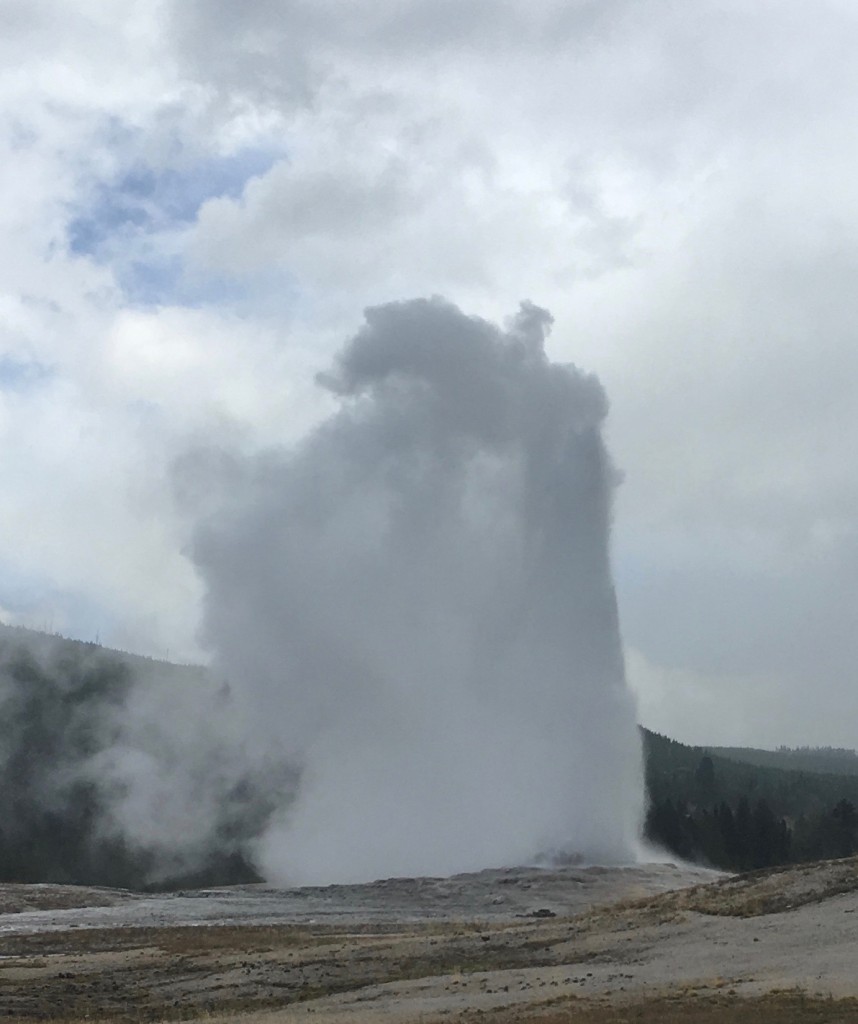
A more interesting geyser for me is Grotto Geyser. Although its plume reaches only 15 feet in the air, it’s very close to the trail. The weird shape is believed to be the result of silica covering a stand of trees hundreds (or thousands) of years ago.

Crested Pool is one of 10,000 hot springs scattered across Yellowstone’s two million acres. Water temperature in the pool can exceed the boiling point and at times will explode to heights of seven feet, acting like a geyser.

As we hiked along the Wapiti Lake Trail, we encountered an area with several fumaroles – features with a lot of steam but not much water.
It was dusk when we arrived at the West Thumb trail at Yellowstone Lake’s waters edge. It felt as if we were in another world as we walked along the boardwalk and took in nature’s beauty. It was here that one of our guides told us a story linking this ancient area to modern technology…
Yellowstone’s geology supports the planet’s greatest concentration of microorganisms that live in conditions of extreme temperature, acidity and alkalinity. Research on these organisms has led to the development of an enzyme that can replicate DNA without breaking down. Among other things, laboratory-made versions of this enzyme allow DNA studies to be practical, effective and affordable. He also shared with us that Yellowstone received no direct benefits, even though this commercial product was developed from the study of a Yellowstone microbe!
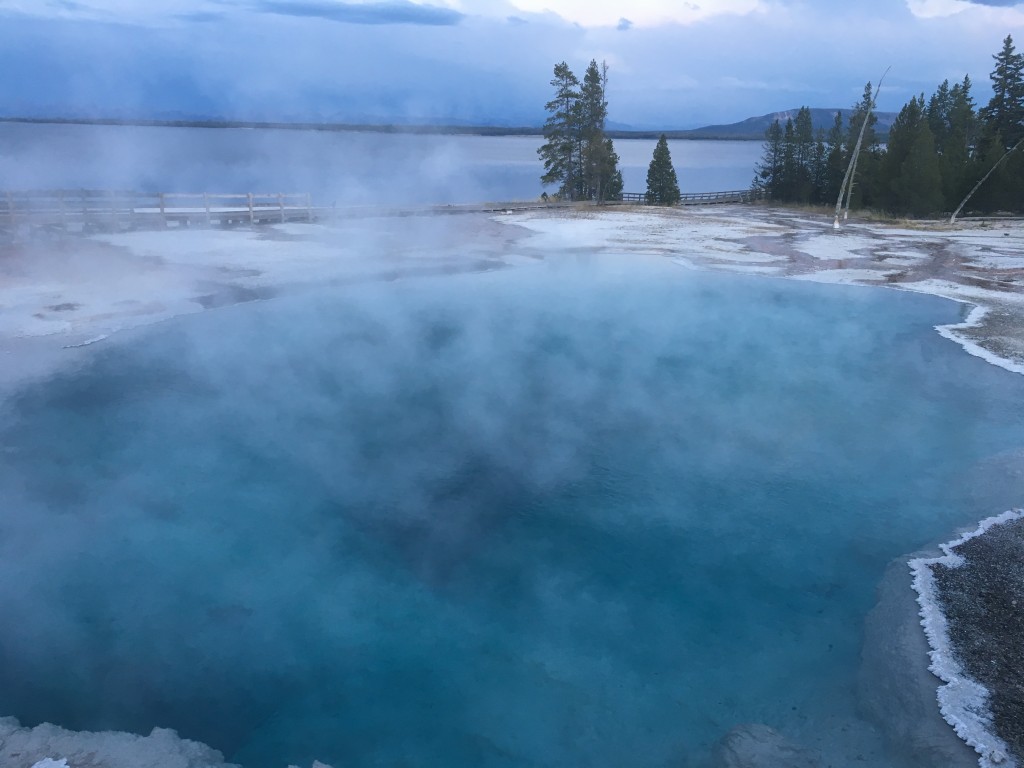
One last shot of one of the pools. This one I took from Biscuit Basin loop trail in the park’s Upper Geyser Basin, a short hike north of Old Faithful. I particularly like this picture as it shows the vibrant colors made by those living organisms that survive the extreme heat.
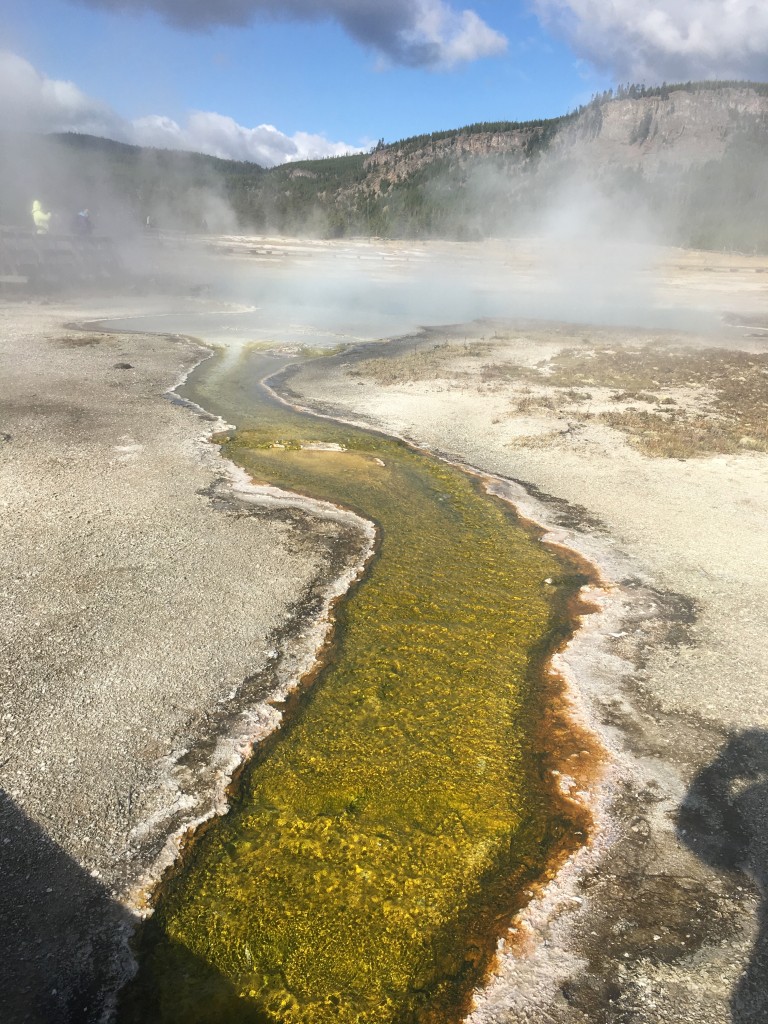
The first national park I ever visited was Grand Canyon. Our young family drove north from Phoenix to see this natural wonder. But what also sticks in my mind about that trip was what happened when we stopped alongside the road to admire the mountainous area around Flagstaff. Rob, our 2-year-old, was holding the car keys (why??) and thought it would be great fun to throw them over the guardrail and down into a gulley! We retrieved them and made it to the park.
The Grand Canyon of Yellowstone pales in comparison to Arizona’s, but is still a sight to behold. As we approached the 2-mile point in our hike along the Clear Lake Trail, our guide asked us to close our eyes and move forward slowly. When told we could open them, we had a clear view of the canyon. With my “mild” aversion to heights, I approached cautiously! We stopped here and enjoyed the view while we ate our lunches.
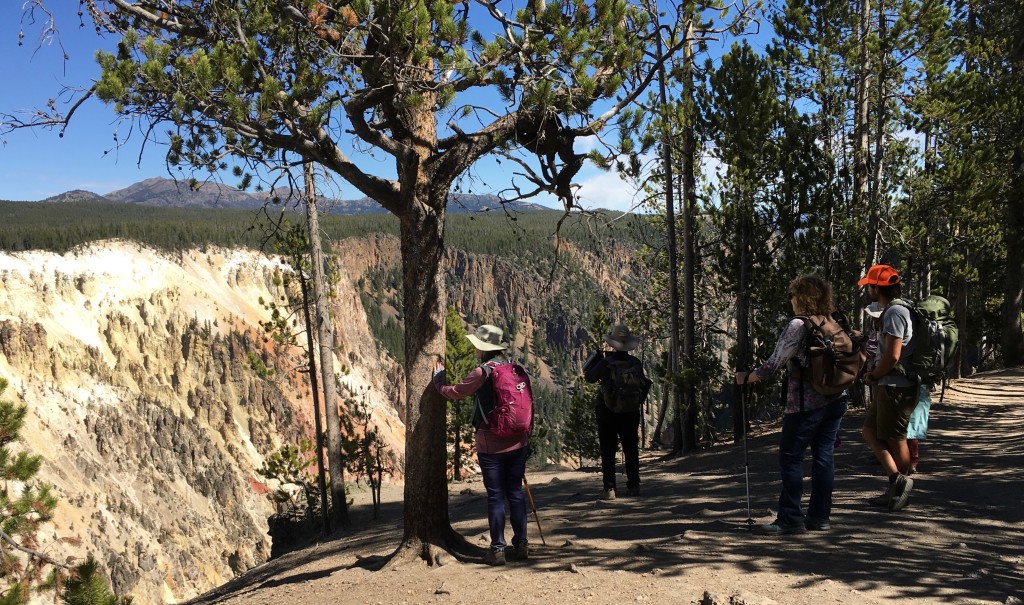
From our lunch spot, moving down the South Rim Trail we came to Artist’s Point with a classic view of the canyon and the Lower Falls

One chilly morning we ascended the trail along the Little Firehole River to view another falls: the 70-foot Mystic Falls.

One of my favorite hikes was the 5+ miles we did along the Howard Eaton Trail that took us from the trailhead into Mammoth Hot Springs. Stunning scenery, along with some cliff-hangers to challenge my “mild” acrophobia.
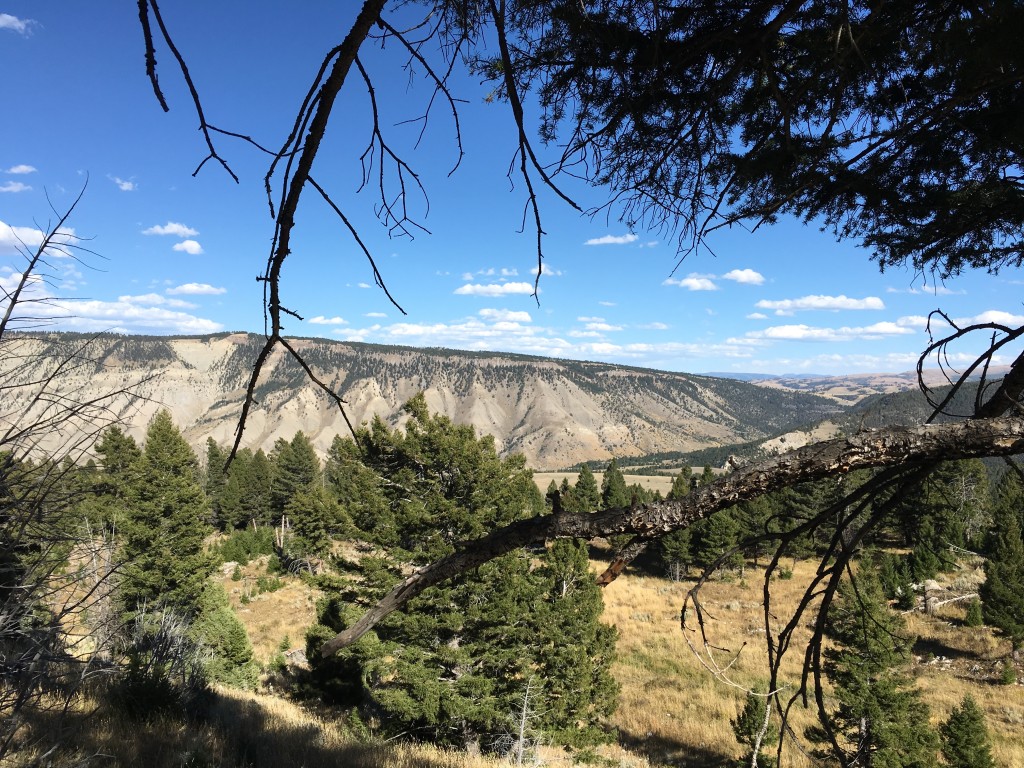
No guard rails!
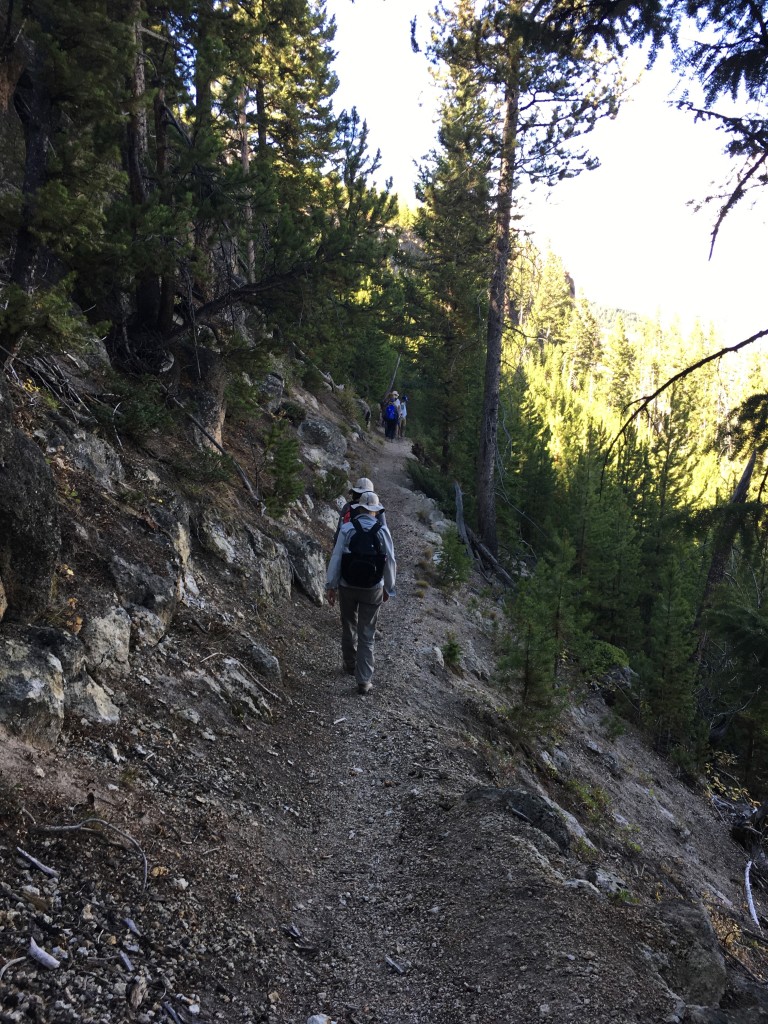
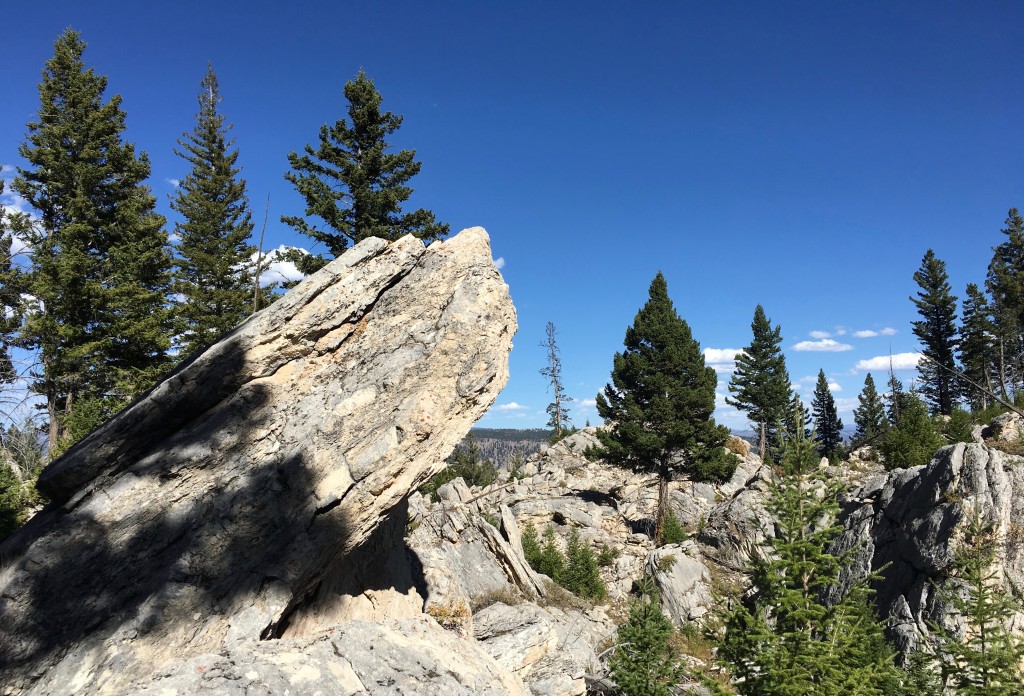
It was getting late in the season, but this guy was showing his colors.
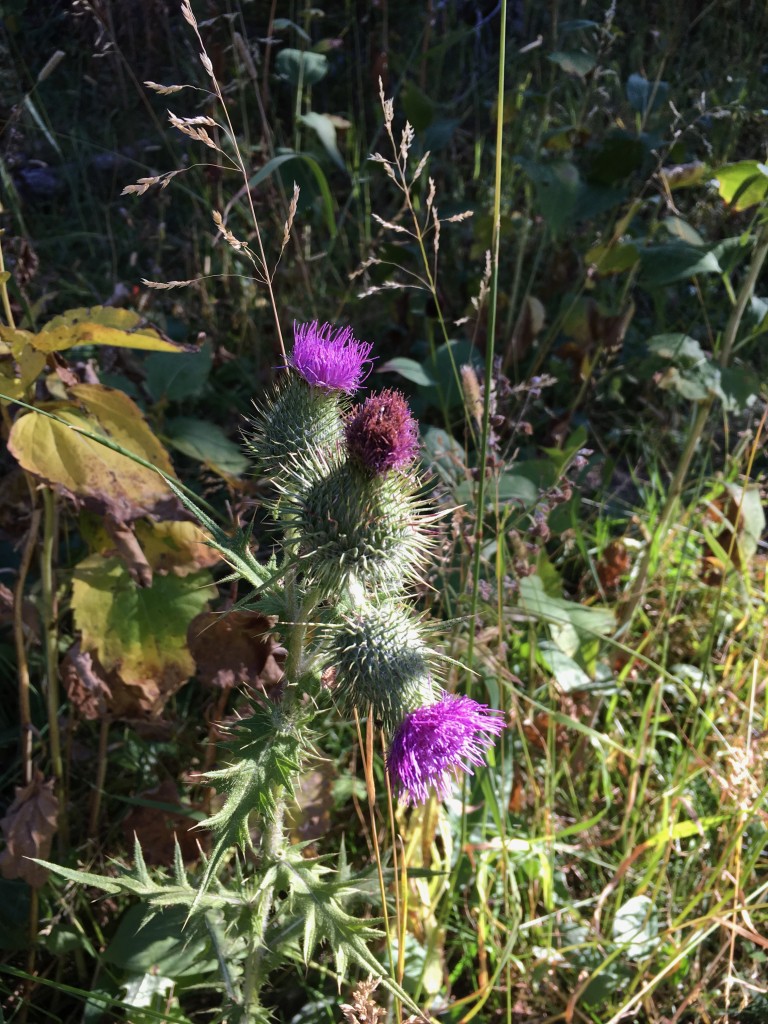
The interaction of (1) water from rain and snow; (2) heat from the underlying Yellowstone Caldera and (3) limestone deposited here millions of years ago when a vast sea covered the area create these absolutely stunning travertine Terraces (think tile floors!). I took this shot early in the morning at the Mammoth Hot Springs area of the park.
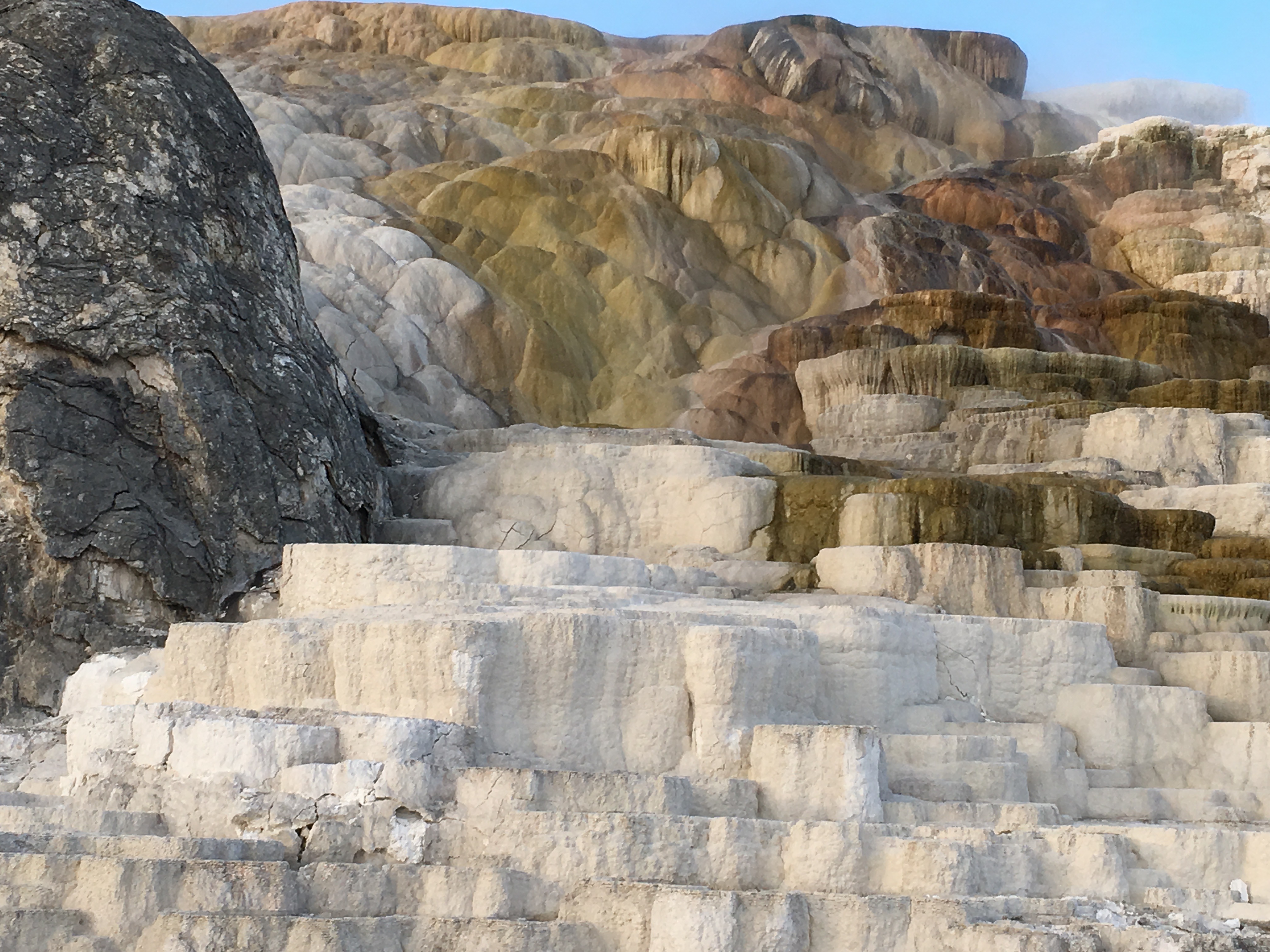
Grand Teton National Park
The Teton Range, the youngest in the Middle Rocky Mountains, extends 40 miles north/south in western Wyoming, just east of the border with Idaho. Much of it lies within Grand Teton National Park and the John D. Rockefeller, Jr. Memorial Parkway that connects the two national parks. The park’s 310,000 acres includes lush valley floors, mountain meadows, alpine lakes and the rising peaks of the Teton Range.
The park is relatively small and compact, with mountain vistas wherever you go. The striking thing to me is there are no foothills – just massive mountains rising straight up!
The Tetons seen here against a brilliant blue sky with a buck & rail fence in the foreground. These type of fences are used in areas where the ground is too hard or uneven to pound regular fence poles into the ground. The fences are an iconic part of the park.
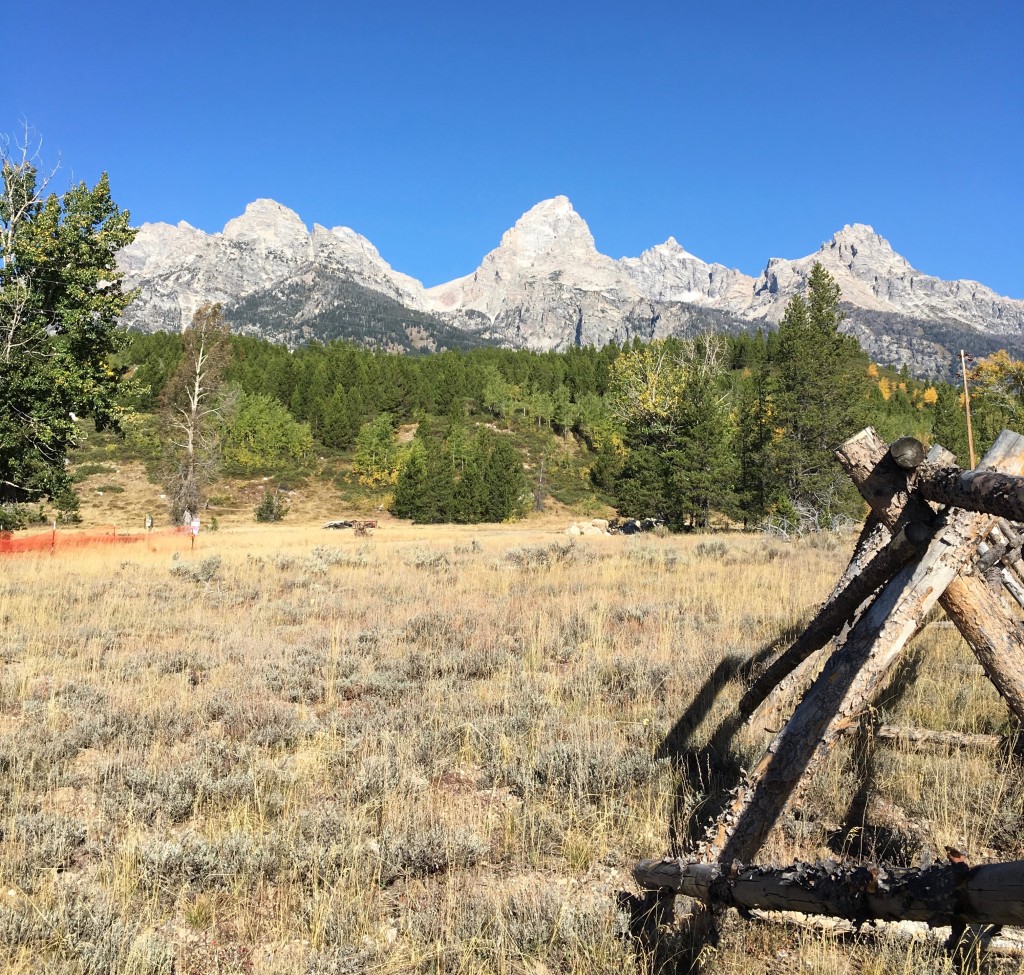
A rest stop on the Taggart Lake trail.
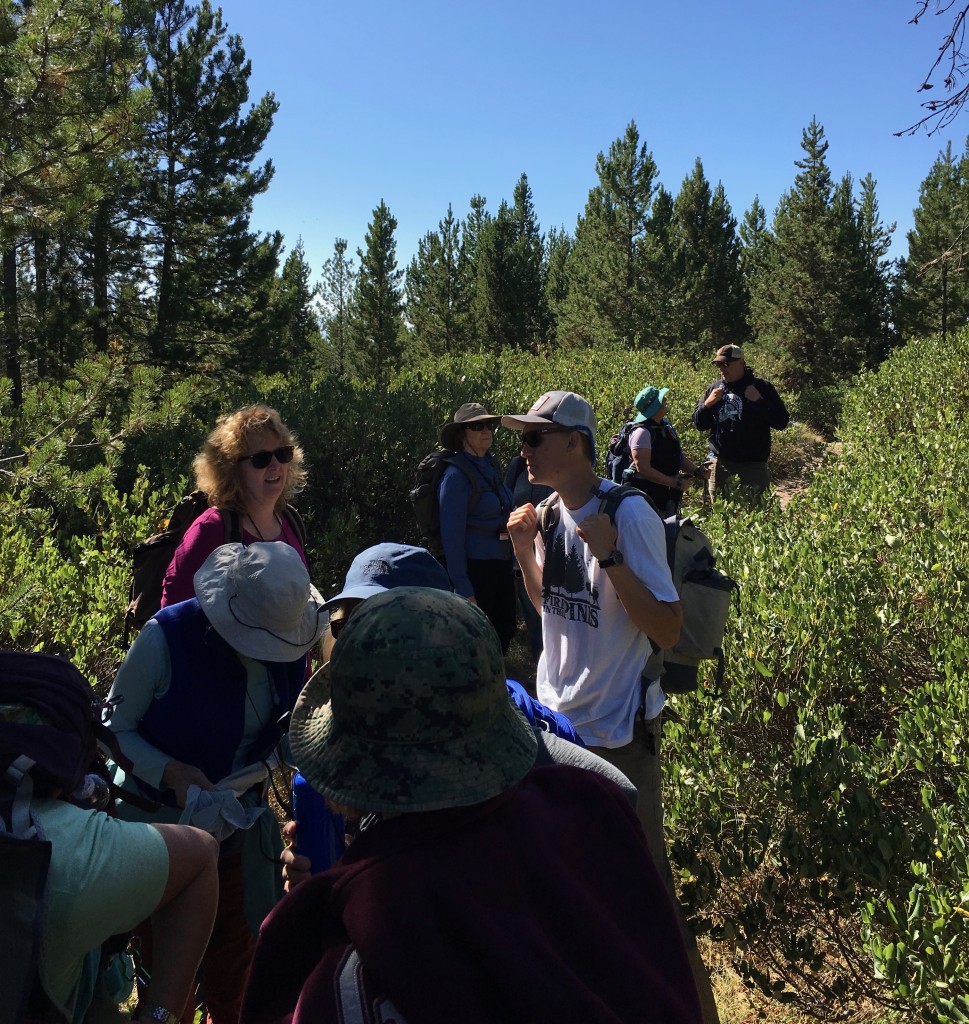
Taggart Lake – a serene setting.
 On our descent from Taggart Lake, we crossed a small wooden bridge over this stream.
On our descent from Taggart Lake, we crossed a small wooden bridge over this stream.
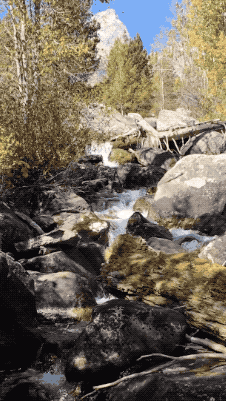
A Grand Teton Association brochure describes the Mormon Row Historic District: “The buildings on Mormon Row tell the story of a once vibrant community. The Homestead Act of 1862 promised 160 acres to any person willing to ‘improve’ the land by building a dwelling and cultivating the land.” In the 1890s, Mormon families began homesteading the land here in the hopes of beginning a new life. The last private acre on Mormon Row was sold to the park in June of 2018.
The Moulton Barn on Mormon Road.

Mt. Moran (over my left shoulder) as seen from the Jackson Lake Lodge.
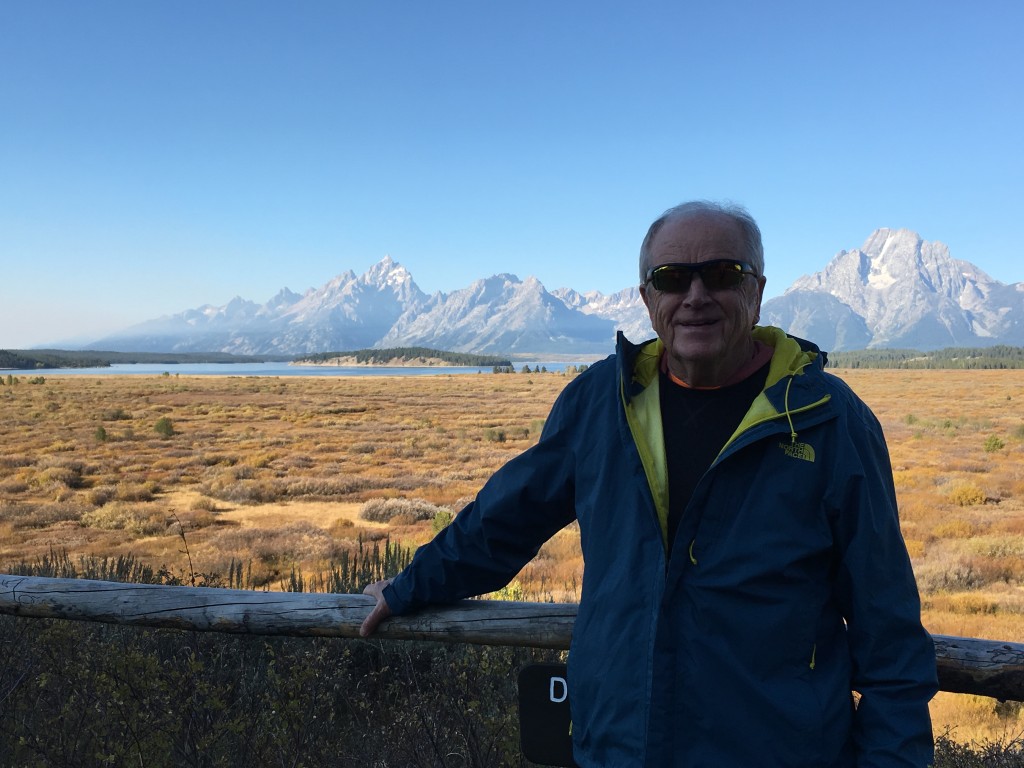
Sunset. From the deck at Dornan’s restaurant.
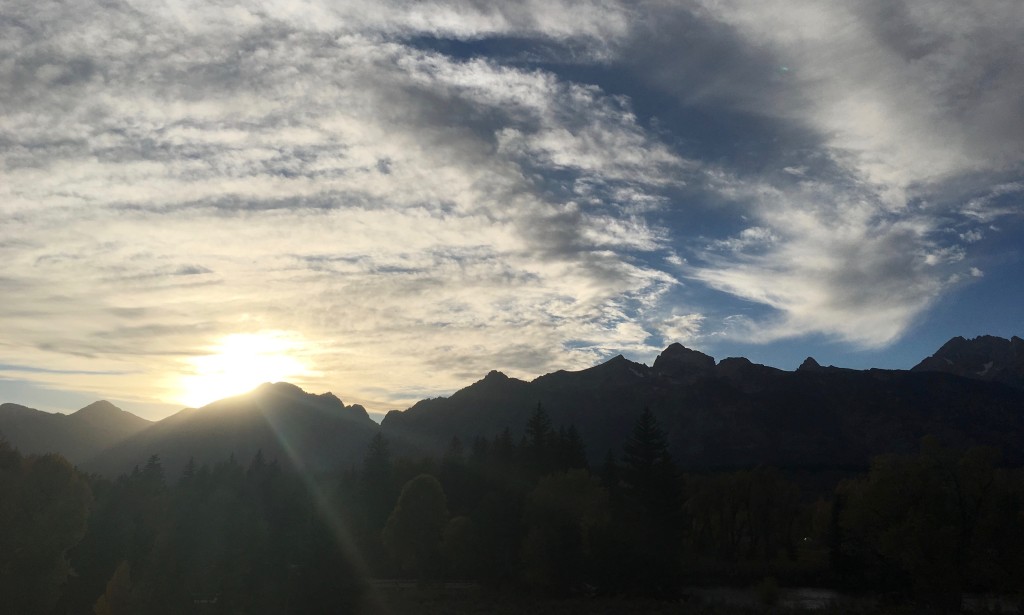
We rode an aerial tram from the Jackson Hole Mountain Resort to the top of Rendezvous Mountain, some 10,000+ feet above sea level. It’s part of the Teton range and straddles the park and the Bridger-Teton National Forest. A popular skiing area in the winter, but no snow yet in mid-September. From the peak, we had spectacular views of the valley below. Some in our group hiked a few miles at the peak. I was content with a shorter walk around the summit.
Some folks were really adventurous and climbed to this outlook – not me!
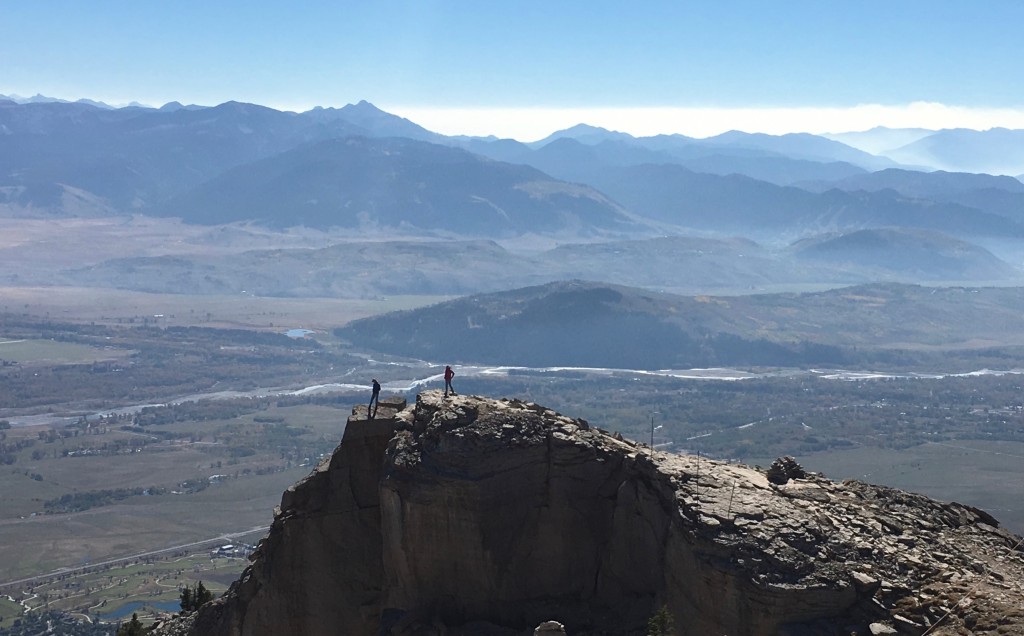
In my walk around the summit I came to Corbet’s Couloir. According to Mens Journal, “Probably the most famous run in North America, Corbet’s Couloir in Jackson Hole sets the standard that every iconic ski run is measured against.” I got as close to the edge as I could (without feeling the urge to jump!) and snapped this picture. The inset one of the skier doing a flip is from Powder Magazine with credit for photo to Jay Goodrich.
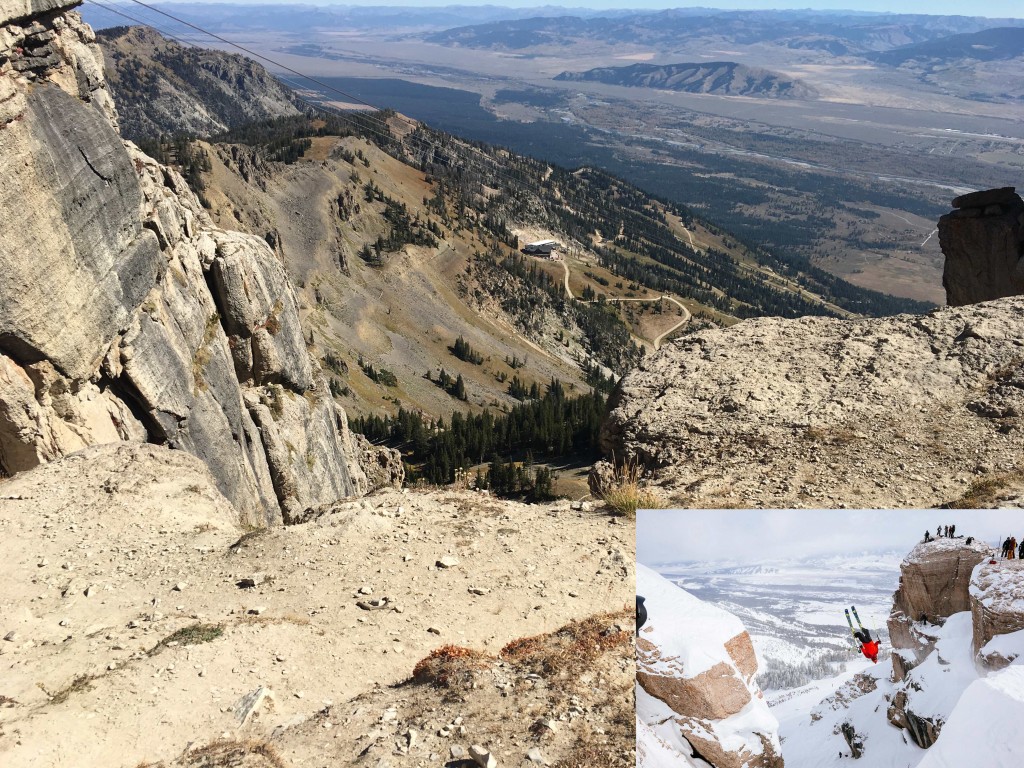
Wildlife
In both parks, we saw herds of bison in the meadows and a few close up. This one, on the road north of the Jackson Lake Lodge in Teton NP, had us waiting for 15 minutes or so before we were able to pass it. A massive animal!

It was mating season for the elk. As Courtney Holden writes: “At its peak from mid-September to mid-October, the elk rut is a time when male elk, or bulls, vie for the hearts of their female counterparts, known as cows. Their goal is to prove their prowess and win the loyalty of a “harem” of females. Eight-to-nine-year-old bulls stand the greatest chance of mating.”
The week before I arrived, a man watching two mail elk fight in Yellowstone’s Mammoth Hot Springs was attacked and knocked to the ground. A video of the encounter went viral.
Toward the end of our hike on the Eaton trail in Yellowstone, we spotted a female elk and her youngster grazing to side of the trail. As instructed, we passed slowly and quietly taking care not to come between the two. Once we were off the trail in Mammoth Hot Springs, we saw many elk in the area and a heavy presence of park Rangers keeping folks a safe distance away. This guy was right outside the Lodge dining room window. In the 18 hours we were in that area, I heard numerous bugle calls of bulls trying to increase their harem!

We ended our explorations in the parks with a visit to the National Museum of Wildlife Art in Jackson Hole. Founded in 1987, the museum contains wildlife paintings, photography and sculpture – the outside sculpture garden is really impressive. Fittingly, the museum sits on a hill overlooking the 24,700 acre National Elk Refuge created in 1912 “to protect habitat and provide sanctuary for one of the largest elk herds on Earth.”
Robert Bateman describes “Chief”, his acrylic on canvas that hangs in the museum: “I was after a dynamic shift, where the left-hand side of the picture is the place where the subject originates. It’s like an oncoming locomotive. The tension increases as you move from left to right.”
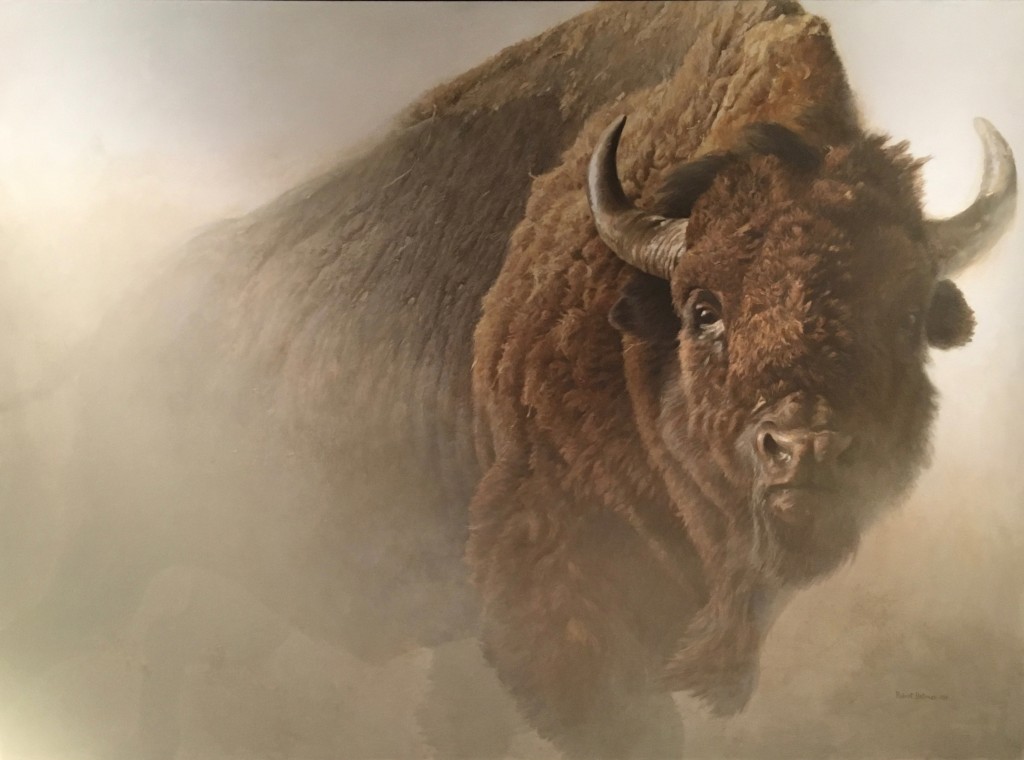
It was a great time of year to be in the parks – the crowds were down and the weather fabulous (even the sleet at Old Faithful!) Throughout the week, the TSS staff chose some of the less-traveled hikes, such that on some we never saw another hiker. We couldn’t avoid the masses at Old Faithful or Artist Point, but we didn’t linger there.
Another great Road Scholar trip!
Knowing that I’d be at minimum altitude of 6,200 feet and climbing beyond that for over a week, I came to the area a day before to semi-acclimate myself. Flights out of the area were such that I stayed an extra day at the end – both times at the Anvil Hotel, nicely located in the town of Jackson. The town is a funky mix of artist studios/shops; camping/hiking/skiing stores; boutiques; coffee shops and tons of restaurants – all mixed up with an old west vibe – including raised wooden sidewalks connecting most of it.
In the middle is the town square – a tranquil tree-shaded park with elk antler-arched entrances on the four corners. As a plaque in the square explains: “Antler arches have been gates to Jackson Town Square since 1960. The antlers are from elk that winter on the National Elk Refuge. About 7,500 elk spend each winter on the refuge. The bulls shed their antlers each spring. Antlers are picked up by local Boy Scouts and sold by public auction in this square each May.”
I couldn’t resist a photo before I left town!
